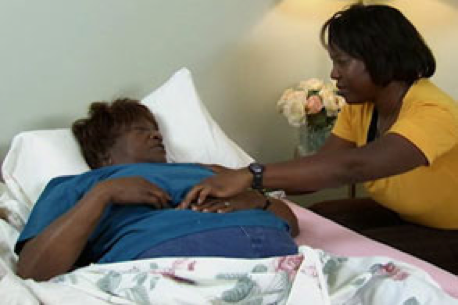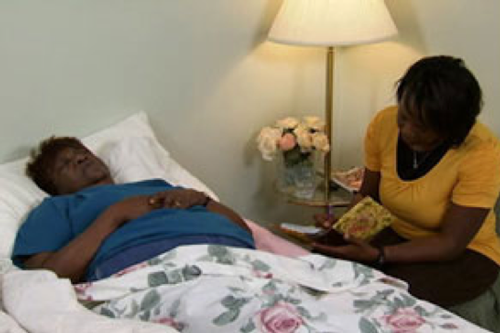
The biggest challenge you will face is knowing when a person has pain and then deciding what to do. Your ability to help the person you care for depends on recognizing pain.
Pain usually affects how a person speaks, looks, moves, and acts around others. When you see the signs of pain, ask the person if he or she is in pain.
Signs of pain include:
Persons with dementia, severe stroke, mental retardation, or psychosis are often not able to report their pain. Being able to recognize pain means you must know the person well. Changes in behavior and body movements are the signs of pain, including:

If a person develops pain, you want to learn as much as you can so that you can inform their doctor. This is very important with acute or chronic pain that suddenly changes in character. Many people, especially those with a heart problem may not say they have pain, but will use words like “pressure”.
When a person is in pain, ask them these questions:
Keep a record in your care diary and write down all of the information so that you can report it to the person’s doctor.
The nature of a person’s pain will determine what you should do. Always remember that if you have any doubt at all about a person’s pain and the person’s condition, call their doctor or emergency medical services (EMS).
Do not transport the person in your car.
If the pain is serious, as in the case of a heart attack, the person will be treated in the ambulance. You cannot give treatment in your car and the person might become worse as you drive to the hospital. People don’t always feel the need to call 911. Listen to your instincts. You could risk their life by not calling emergency services.
If a person has acute pain
If a person has acute pain or the same as pain in the past (e.g. back pain, pain from a muscle sprain or tear, pain from surgery), first see if it is time to take any pain medicine ordered by their doctor. If so, give the medicine. Provide a quiet environment. Then, keep an eye on the person after giving the medicine, and if there is no relief within 30 minutes call their doctor.
The doctor will order the specific times when it is safe to give pain medicine.
Pain medicine taken regularly around-the-clock (ATC) is best because it keeps medicine at the same level in the body at all times. Sometimes pain is not constant and does not occur regularly. In this case, the doctor may order medicine “as needed” or PRN.
For example, the doctor may order the pain medicine to be given “every 4 hours as needed for pain”. You should not give the medicine any sooner than every 4 hours. But, you may not need to give it every 4 hours, depending on the pain level of the person you are caring for.
Remember to give pain medicine to the person you care for at the right time.

Whether a person has acute or chronic pain, there are things you can do in addition to giving them their pain medicine that will help in lessening their pain.
These include: